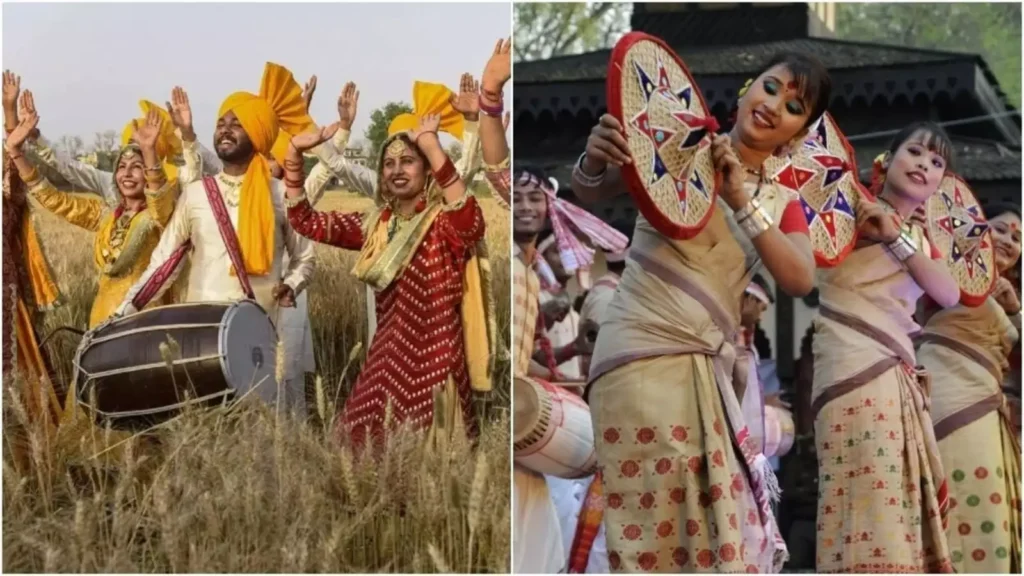January in India is synonymous with vibrant harvest festivals, celebrated under different names and customs in various regions, symbolizing the agricultural cycle’s importance.
- These festivals are not only a celebration of the harvest but also a tribute to nature’s elements like the earth, fire, rain, and sun.
About Lohri:
- Predominantly celebrated in North Indian states like Punjab, Haryana, Himachal Pradesh, and Jammu and Kashmir.
- Marks the end of winter and is characterized by bonfires, singing, dancing, and traditional foods like Makki ki Roti, Sarson ka Saag, and Pinni.
- A tribute to the sun god and the fire god.
About Makar Sankranti:
- Observed nationwide, this festival honours the sun’s transition into Capricorn (Makara), symbolizing the end of winter and the onset of longer, warmer days.
- Traditions include worshipping the Sun God, taking holy dips, flying kites, and charitable activities.
- Known as Maghi in North India, Poush Sôngkrānti in West Bengal, and Sukarat in Central India.
About Pongal:
- A 4-day festival predominantly in Tamil Nadu, Sri Lanka, and Pondicherry.
- Celebrations involve boiling the first rice of the season, house decorations, and prayers to the Sun God.
- The festival includes Bhogi Pongal, Surya Pongal, Mattu Pongal, and Kannum Pongal.
- Jallikattu, a bull-taming sport, is an integral part of the celebrations in Tamil Nadu.
About Uttarayan:
- Also known as Uttarayan, especially celebrated in Gujarat and Rajasthan with grand kite-flying events.
- The International Kite Festival in Ahmedabad, Gujarat, since 1989, is a major attraction.
- Symbolizes purity and spiritual awakening, with the belief that the sun’s rays during this time purify the body.
Ref: Source
| UPSC IAS Preparation Resources | |
| Current Affairs Analysis | Topperspedia |
| GS Shots | Simply Explained |
| Daily Flash Cards | Daily Quiz |



